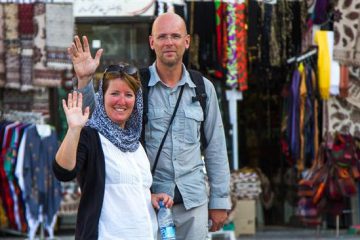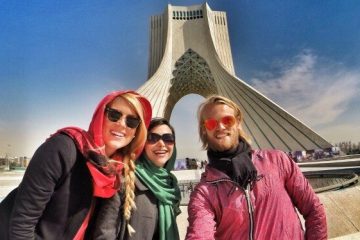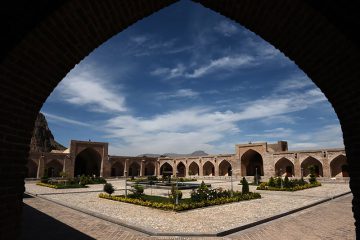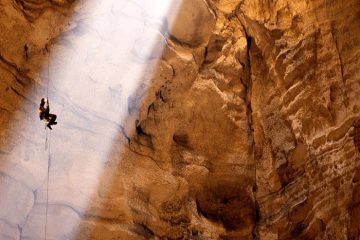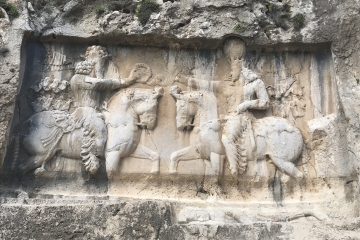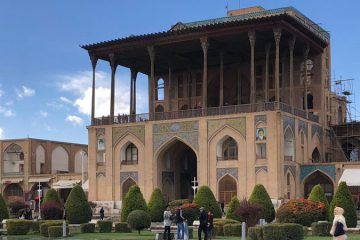
Isfahan Travel Guide, Capital Of Art!
In this Isfahan Travel Guide, we explore the capital of art, located in central Iran, just south of Tehran. Known as “Nesf-e-Jahan” or “Half the World” among Persians, Isfahan boasts a rich cultural heritage and breathtaking sights.
Famed for its exquisite hand-painted tiling and expansive public square, Isfahan is widely regarded as one of the world’s most beautiful cities. With a history dating back to its days as the capital of Persia from 1598 to 1722, Isfahan has earned recognition for its fine carpets and intricate silver filigree.
In present times, textile and steel mills have become prominent features of the cityscape, seamlessly blending into its urban fabric. With its captivating architecture, tree-lined boulevards, and leisurely atmosphere, Isfahan stands out as one of Iran’s most cherished destinations.
Situated approximately 430 kilometers south of Tehran, nestled at the base of the Zagros Mountain range, Isfahan boasts a temperate climate characterized by distinct seasons. Positioned at the crossroads of Iran’s major north-south and east-west routes, the city shares similarities with Denver, USA, in terms of altitude and precipitation patterns.
Isfahan’s charm extends beyond its physical attributes; it shares a special bond with Freiburg, serving as its twin city. Notably, Freiburg Street in Isfahan has earned widespread acclaim, adding to the city’s allure and international appeal.
Let’s dive in Isfahan Travel Guide:
Isfahan Travel Guide
Best Time to Explore Isfahan
Isfahan’s climate mirrors much of the Iranian plateau, characterized by aridity and minimal rainfall. Understanding the seasonal nuances can enhance your travel experience in this vibrant city.
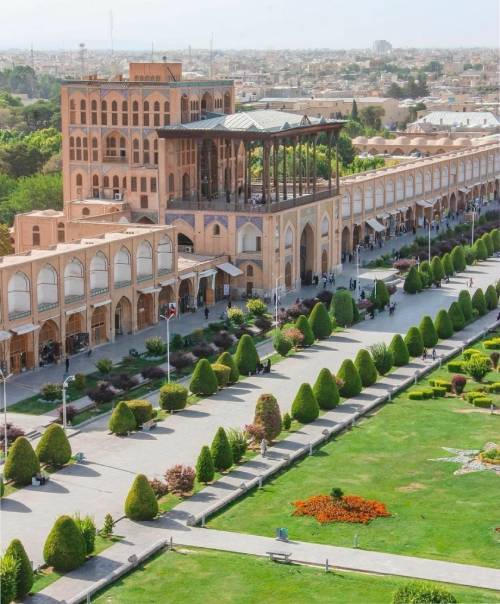
Winter spans from December to February, offering crisp temperatures ranging from -2°C (27°F) to 8°C (47°F) in January. Occasionally, cold waves can bring temperatures plummeting to -10°C (14°F), with the record low reaching -19.4°C (-2.9°F). Snowfall is a regular occurrence during this time, adding a magical touch to Isfahan’s landscapes.
In stark contrast, summers from June to August bring sweltering heat, with highs soaring to 36°C (97°F) in July. Despite the scorching daytime temperatures, evenings offer relief with pleasant lows hovering around 21°C (70°F). Be prepared for heat waves, as temperatures can spike, with the record high peaking at 43°C (109°F).
Considering these weather patterns can help you plan your visit to Isfahan, ensuring a comfortable and enjoyable exploration of this captivating city.
Next in Isfahan Travel Guide, Let’s find best ways to navigate Isfahan:
Efficient Ways to Navigate Isfahan
Getting around Isfahan is hassle-free thanks to its well-established public transportation options.
Bus Services in Isfahan
Exploring the city by bus is convenient and budget-friendly. For a nominal fare of IRR 25,000 (November 2022), travelers can enjoy a single journey. Payment can be made directly to the driver or through multi-journey contactless cards available at select bus stop booths. Notably, buses feature separate sections for men (front) and women (rear) to ensure comfort and convenience for all passengers.

From Kaveh Bus Terminal, hop on Bus 91, which traverses Chahar Bagh-e Pa’in St en route to the city center, passing through Takhti Junction and Imam Hossein Sq along the way.
Metro System
Isfahan Metro offers another efficient mode of transportation within the city. The first phase of Line 1 spans 11 km, connecting Qods in the northwest to Shohada via key points like Kaveh (Northern long-distance bus terminal) and Sofeh (Southern long-distance bus terminal). With a fare of IRR28000 (November 2022), travelers can enjoy seamless journeys. Multi-journey contactless cards are available for purchase at any metro station ticket seller’s office.

Ride-Sharing Apps
For added convenience and affordability, travelers are encouraged to utilize ride-sharing apps like SNAPP or TAP30. These apps often offer lower fares compared to traditional taxis, making them a popular choice among visitors navigating Isfahan’s bustling streets.

By leveraging these transportation options, travelers can explore Isfahan with ease, ensuring a smooth and enjoyable journey throughout their stay.
Next in Isfahan Travel Guide, Let’s find Must see attractions in Isfahan:
Discovering the Wonders of Isfahan: Must-See Attractions
Naqsh-e Jahan Square
Embark on a journey through history at Naqsh-e Jahan Square, often referred to as Shah Square or Imam Square. Dating back to 1602, this iconic square is renowned as the second-largest square globally, following only its counterpart in China. Adorned with two mosques, a palace, and a bustling bazaar, Naqsh-e Jahan Square stands as a testament to Isfahan’s rich cultural heritage. Recognized as a UNESCO World Heritage Site, the square is encircled by majestic buildings from the Safavid era. It serves as a popular gathering spot for locals, who frequent the square for picnics on Friday and holiday evenings.

Exploring Isfahan’s Magnificent Mosques
Isfahan’s mosques stand as captivating landmarks, captivating visitors with their stunning beauty and historical significance.
Sheikh Lotf Allah Mosque
A pinnacle of Safavid Iranian architecture, Sheikh Lotf Allah Mosque is hailed as one of Iran’s most exquisite treasures. Constructed in 1602 under the patronage of Shah Abbas I and designed by the esteemed architect Sheikh Bahai, this mosque exemplifies the grandeur of Persian architecture. Notably, it lacks minarets, reflecting its original purpose as a private sanctuary for the royal family. An underground tunnel connects the mosque to the nearby Royal Palace, underscoring its regal lineage.
Hakim Mosque
Among Isfahan’s oldest mosques, Hakim Mosque dates back to the reign of Shah Abbas II, spanning from 1656 to 1662. Built upon the site of a 10th-century mosque, Hakim Mosque showcases a rich tapestry of history and architectural evolution. The mosque’s portal, concealed beneath layers of mud for centuries, was rediscovered in 1956, offering a glimpse into its storied past.
Masjid-e Jameh
Dating back to AD 842, Masjid-e Jameh stands as a testament to Islamic architectural innovation. It pioneered the four-courtyard layout inspired by Sassanid palaces, setting a precedent for future mosque design. Admired for its intricate craftsmanship and historical significance, Masjid-e Jameh remains a cornerstone of Isfahan’s cultural heritage.
Immerse yourself in the enchanting world of Isfahan’s mosques, where history, architecture, and spirituality converge to create an unforgettable experience.
Isfahan Travel Guide: Exploring Isfahan’s Majestic Palaces
Ali Qapu Palace
Constructed in the early 17th century, Ali Qapu Palace, also known as The Royal Palace, stands as a testament to grandeur and architectural ingenuity. Rising forty-eight meters high with seven floors, each accessible via a challenging spiral staircase, the palace offers a glimpse into the opulent lifestyle of the Safavid dynasty. The sixth-floor music room boasts deep circular niches adorning the walls, enhancing both aesthetic appeal and acoustic quality. Adorned with naturalistic wall paintings by renowned artist Reza Abbassi and his apprentices, featuring floral, animal, and bird motifs, Ali Qapu Palace immerses visitors in a world of artistic splendor.
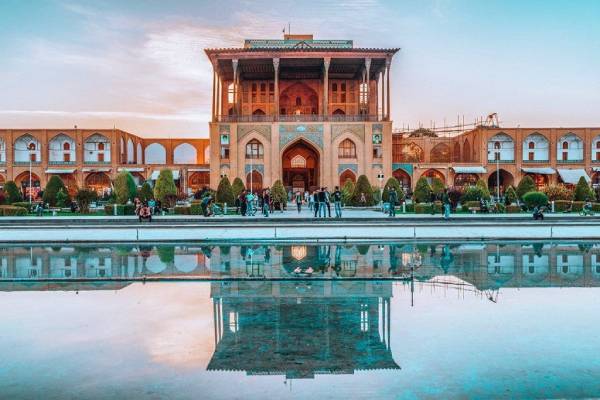
Talar Ashraf (Palace of Ashraf)
Dating back to 1650, Talar Ashraf exudes elegance and grace, serving as a testament to Isfahan’s rich cultural heritage.
Hasht Behesht (Palace of Eight Paradises)
Constructed in 1669, Hasht Behesht Palace offers a glimpse into the luxurious lifestyle of the Safavid rulers. Reportedly built to accommodate the king’s harem, this magnificent palace showcases exquisite architectural details and serves as a testament to Isfahan’s royal legacy.
Chehel Sotoun Palace
Completed in 1647, Chehel Sotoun Palace, also known as The Palace of Forty Columns, captivates visitors with its majestic architecture and rich history. Despite its name, the palace boasts twenty columns, their reflection shimmering in the pool before it. Originally designed for religious-national ceremonies, royal festivals, and hosting esteemed guests, Chehel Sotoun Palace stands as a symbol of Isfahan’s cultural richness and grandeur.

Embark on a journey through Isfahan’s palaces, where history, art, and architecture converge to create an unforgettable experience.
Isfahan Travel Guide: Exploring Educational Institutions in Isfahan
Madreseye Sadr (Sadr School)
Madreseye Shah, formerly known as Imam Jafar Sadegh School after the revolution, offers a glimpse into Isfahan’s rich educational history. Originally built during the reign of Soltan Hossein, a Safavid king, this compound served as a theological and clerical school, nurturing scholars in various sciences. Adorned with bright yellow bricks that impart a sense of lightness, the school’s dome and walls create a striking visual impression. The entrance gate, embellished with a gold facade and silver accents, along with the intricate tile works inside, stand as testaments to fine artistry and craftsmanship. The central courtyard, featuring a tranquil pool and verdant garden, is encircled by arcades on two levels, providing access to student accommodations and fostering a conducive learning environment.
Exploring Isfahan’s Historic Bridges
Stroll along the Zayanderud River, where ancient bridges stand as enduring symbols of Isfahan’s rich heritage. While the river may run dry due to drought and dam mismanagement, the bridges continue to attract locals and visitors alike, offering glimpses into the city’s past.
Pol-e Shahrestan (The Shahrestan Bridge)
Dating back to the 11th century and renovated in the 14th century, Pol-e Shahrestan is one of Iran’s oldest surviving bridges. Its sturdy construction and timeless design bear witness to centuries of history and engineering prowess.
Pol-e Khaju (Khaju Bridge)
Constructed in 1650 under the patronage of Shah Abbas II, Pol-e Khaju stands as a testament to Safavid architectural splendor. Originally adorned with ornate tile works and paintings, the bridge served as a teahouse, offering respite and relaxation to travelers crossing its elegant arches.
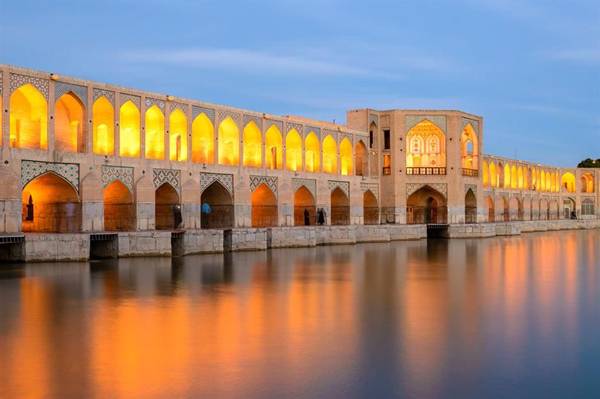
Si-o-Seh Pol (The Bridge of 33 Arches)
Built in 1602, Si-o-Seh Pol ranks among the most renowned examples of Safavid bridge design. Its thirty-three arches span the Zayanderud River with grace and grandeur, captivating visitors with its architectural magnificence.
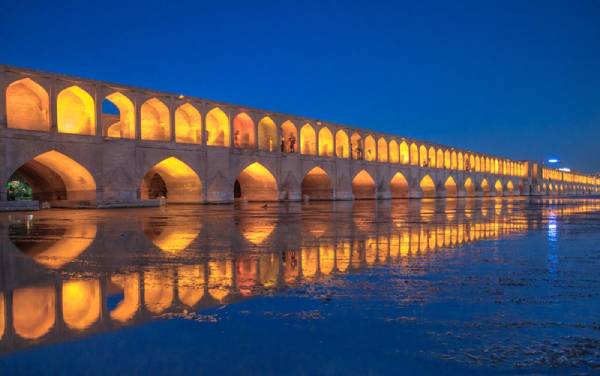
Pol-e-Joui or Choobi (Joui Bridge)
Dating back to 1665, Pol-e-Joui is one of Isfahan’s oldest bridges, a testament to the city’s enduring legacy during the Safavid era. Its sturdy construction and timeless charm continue to enchant those who cross its historic span.
Take a stroll across Isfahan’s bridges and immerse yourself in the city’s rich history and architectural marvels.
Isfahan Travel Guide: Exploring Churches and Cathedrals in Isfahan
Vank Cathedral in Julfa Neighborhood
Step into history at Vank Cathedral, also known as the Church of the Saintly Sisters, dating back to the 17th century. Situated in the Julfa neighborhood of historic Isfahan, this cathedral boasts a remarkable interior adorned with exquisite paintings and gilded carvings. A wainscot of intricate tile work adds to its allure, creating a mesmerizing ambiance for visitors. The centerpiece of the cathedral is its delicately painted central dome, depicting the Biblical story of the creation of the world and the expulsion of man from Eden. Noteworthy frescoes adorn the entrance, illustrating vivid scenes of heaven and hell. Entrance to the compound, which also includes a museum, is priced at IRR200,000, offering excellent value compared to other attractions in the area.
Kelisaye Maryam (Maryam Church)
Kelisaye Maryam, or Maryam Church, invites visitors to experience tranquility and spirituality in the heart of Isfahan. While details about this church are limited, its presence adds to the city’s rich tapestry of religious diversity and cultural heritage.
Explore the rich history and architectural wonders of Isfahan’s churches and cathedrals, where every corner tells a story of faith, art, and tradition.
Isfahan Travel Guide: Discovering Modern Isfahan
Isfahan City Center, recently unveiled to the public, offers a myriad of attractions and amenities to visitors. From its state-of-the-art museum and diverse food court serving both traditional and international cuisine to its captivating art gallery, this center promises an unforgettable experience. Boasting the largest shopping mall in Iran, featuring a wide range of local and international brands, and the country’s largest indoor amusement park, Isfahan City Center caters to every taste and preference. With such a wealth of offerings, you can easily spend an entire week exploring the center’s facilities and enjoying all it has to offer.
Exploring Modern Delights in Isfahan
Modern Restaurants
Indulge in a culinary journey at contemporary dining spots like Shab Neshin, Kentucky House, and Hermes. These establishments offer a diverse array of culinary delights, catering to both local and international palates.
Modern Amusement Parks
Experience thrills and excitement at Isfahan’s modern amusement parks, including Isfahan City Center Amusement Park, Simorgh Amusement Park, and Dreamland Amusement Park. These attractions provide fun-filled entertainment for visitors of all ages.
Kids Club Sofia
For families with children, Kids Club Sofia offers a top-notch childcare facility in Esfahan. With English language education and engaging activities like rock climbing and sand games, children are kept entertained while parents relax. Located at No. 177, Ghorbanian Deadend, Bazarcheh St., Second Moshtagh (Near Shahrestan Bridge), this club offers quality care at an affordable price of approximately 3 US dollars per hour.
Isfahan Travel Guide: Other Isfahan Sights
Explore the cultural landmarks of Isfahan, including:
Atashgah: A reconstructed Zoroastrian fire temple with stunning views of the city.
Buqe’h-ye Ibn-Sina (Avicenna’s Dome): A 12th-century architectural marvel.
The Tombs of Nizam al-Mulk & Malek Shah: Historical sites dating back to the 12th and 18th centuries.
Jolfa: The Armenian Quarter, home to some of Iran’s most beautiful churches.
Sheikh Bahai Bathhouse: A historical bathhouse in need of restoration.
Pigeon Towers: 17th-century structures built to attract pigeons for their feces, used as fertilizer.
Hamam-e (Bathhouse) Ali Gholi Agha: A tranquil spot in a quiet neighborhood, frequented by local artisans.
Immerse yourself in the vibrant colors and rich heritage of Isfahan, where modern amenities blend seamlessly with centuries-old traditions.
Exploring Isfahan: Must-Do Activities
Soffeh Mountain Excursion: Take a taxi to the southern part of the city and ascend Soffeh Mountain via a telecabin ride, available for approximately IRR500,000. Alternatively, enjoy a game of bowling at the city’s sole bowling alley located beneath the Telecabin station.
Riverside Stroll: Wander along the picturesque Zayanderood River, immersing yourself in the beauty of well-maintained parks and historic bridges dotting the riverbanks.
Naqshe-Jahan Square Carriage Ride: Experience the charm of Isfahan’s historic Naqshe-Jahan Square with a horse-drawn carriage ride, offering a unique perspective of this iconic landmark.
Picnic at Nazhvan Garden: Unwind amidst nature’s splendor with a leisurely picnic at Nazhvan Garden, soaking in the serene surroundings and scenic vistas.
Chahar-Bagh Street Promenade: Indulge your senses with a stroll along Chahar-Bagh Street, savoring Persian saffron ice cream while admiring the vibrant ambiance of this bustling thoroughfare.
Day Trip to Kashan and Qamsar: Embark on a memorable day trip to the enchanting towns of Kashan and Qamsar, especially during the months when local Rosewater production is in full swing in Qamsar. Delve into the rich cultural heritage and natural beauty of these captivating destinations.
Immerse yourself in the diverse experiences Isfahan has to offer, from scenic mountain vistas to historic landmarks and cultural excursions.
Exploring Isfahan’s Unique Souvenirs
Isfahan, renowned as “Half the World,” not only boasts mesmerizing mosques and historic bridges but also serves as a treasure trove of traditional Iranian arts and crafts. Wander through the bustling bazaars, where the aroma of spices fills the air, and the rhythmic sounds of artisans at work beckon you to discover the essence of Isfahan. Here’s a guide to what to buy in Isfahan, allowing you to carry a piece of this Persian gem home.
Persian Carpets and Rugs

Isfahan is celebrated for its exquisite handwoven carpets and rugs, each narrating a unique tale through intricate patterns and vibrant hues. These carpets, more than just floor coverings, are masterpieces meticulously crafted over months or even years. While they may come with a higher price tag, owning an Isfahani carpet means possessing a slice of Persian history in your home.
Miniature Paintings

Delve into the art of miniature painting, cherished in Iran for centuries. These delicate artworks portray scenes from Persian myths, poetry, and everyday life with finesse and detail. Explore the galleries near Naqsh-e Jahan Square to find original pieces or even commission a personalized miniature painting as a one-of-a-kind memento.
Khatamkari (Marquetry)
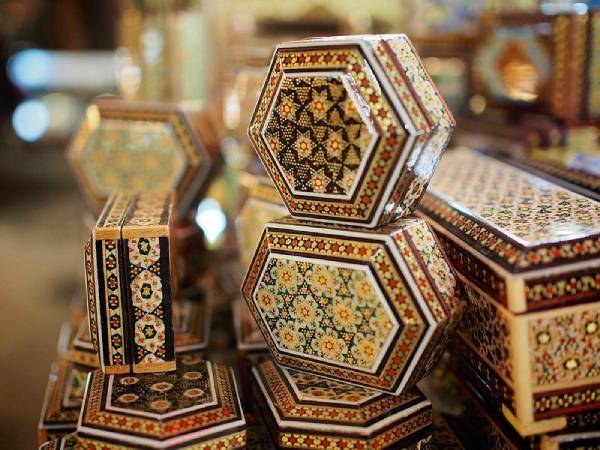
Experience the art of Khatamkari, where intricate geometric patterns are meticulously crafted from thin wood, bone, and metal pieces. From boxes and frames to chessboards and furniture, each piece showcases the artisan’s dedication and skill, making for exquisite souvenirs.
Hand-painted Tiles
Adorn your walls with the grandeur of Isfahan’s mosques and palaces through hand-painted tiles. Featuring floral motifs, Persian calligraphy, and scenes from folklore, these tiles add a touch of elegance to any space.
Traditional Sweets and Nougats
Indulge in Isfahan’s delectable sweets, including Gaz, a nougat made from the sap of the Angebin plant, combined with rosewater, pistachios, and almonds. Packaged in beautiful boxes, these treats make for delightful gifts or delightful companions to a cup of Iranian tea.
Termeh
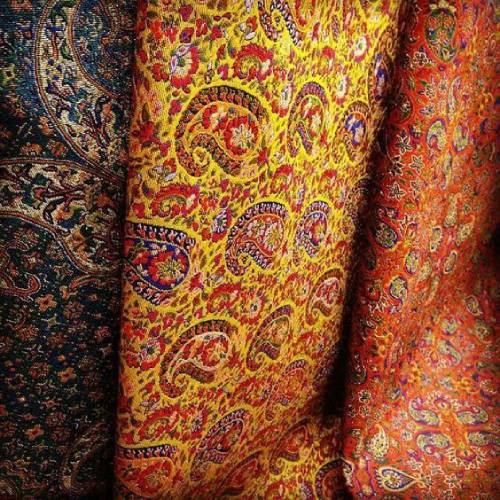
Experience the luxury of Termeh, a handwoven fabric traditionally used for ceremonial clothing. Today, it adorns tablecloths, shawls, and cushion covers, boasting rich colors and intricate designs that reflect Isfahan’s textile heritage.
Qalamzani (Metal Engravings)
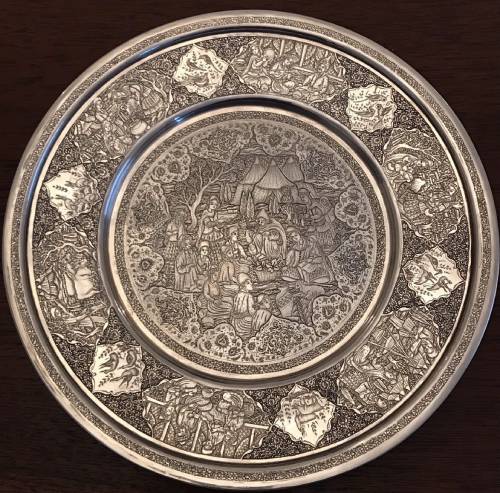
Admire Isfahan’s brass and copperware, adorned with intricate engravings through Qalamzani. From vases to trays, these items shimmer with tales of Persian legends and motifs, adding a touch of opulence to any space.
Pottery and Ceramics
Enhance your home with Isfahani pottery, featuring distinctive blue and turquoise glazes. Bowls, plates, and decorative pieces, often embellished with poetic inscriptions, serve as charming reminders of your Isfahan adventure.
Discover the charm and craftsmanship of Isfahan’s souvenirs, allowing you to cherish the memories of your visit for years to come.
Exploring Isfahan’s Culinary Delights
Indulge in the vibrant food scene of Isfahan, where culinary experiences blend seamlessly with outdoor picnics and traditional dishes. Here’s a guide to what to eat in Isfahan, ensuring a memorable gastronomic adventure:
Picnic in the Parks
In some parks, acquire a carpet and tea from the park warden, and relish a picnic on the lush grass. Join local families as they gather, bringing barbecues to cook freshly made kebabs that fill the air with delightful aromas.
Local Foods in Isfahan
Chelo Kebab: A must-try, with regional variations adding a unique touch to this classic dish.
Biryani: Indulge in this popular lunch option, often mistaken for “Biryani,” made from sheep meat and lung. Opt for a dietary version if desired.
Fereni & Shireh: Savor a bowl of Fereni, a delectable concoction of cereal, rice flour, water, and milk, often mixed with date essence. Visit Fereni Hafez along Hafez Street near Imam Square to enjoy this treat, priced at IRR15000 for a small bowl or IRR25000 for a larger serving.
Khoresht Mast: Treat your taste buds to this unique dessert dish, exclusive to Isfahan. This sweet yellow pudding, known as “Yogurt Stew,” features saffron, meat, and yogurt among its main ingredients.
Doogh-o-Gooshfil: Experience the unusual pairing of Doogh (a salty/sour yogurt drink) with Gooshfil (a kind of sweet), offering a blend of flavors that tantalize the senses.
Delight in the diverse flavors of Isfahan’s cuisine, from traditional kebabs to unique desserts, ensuring a culinary journey that satisfies every palate.

